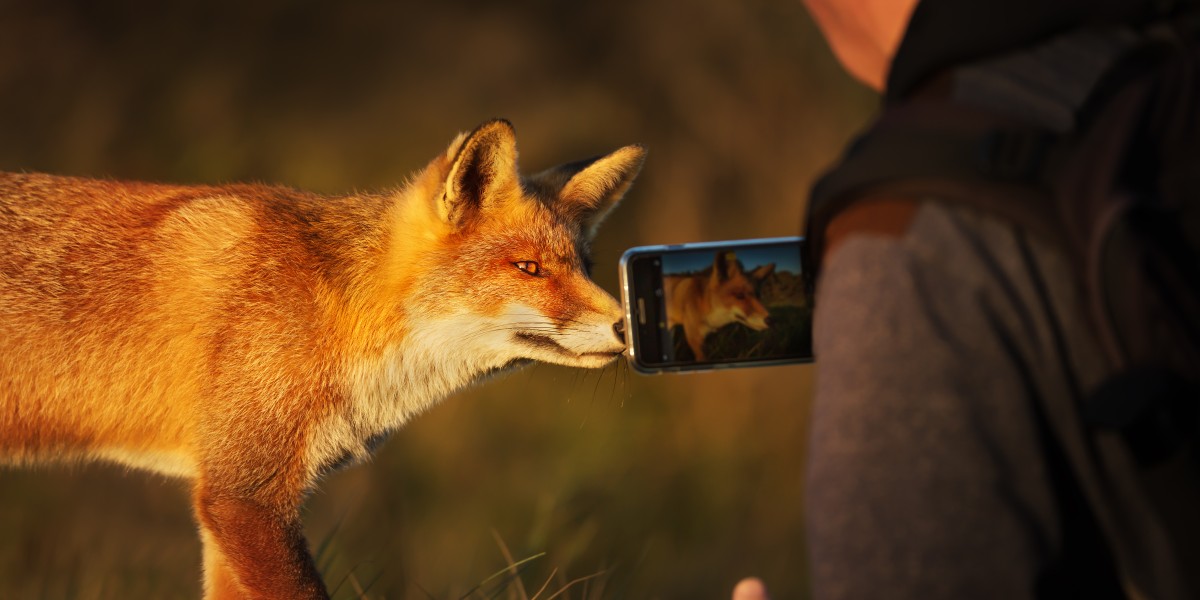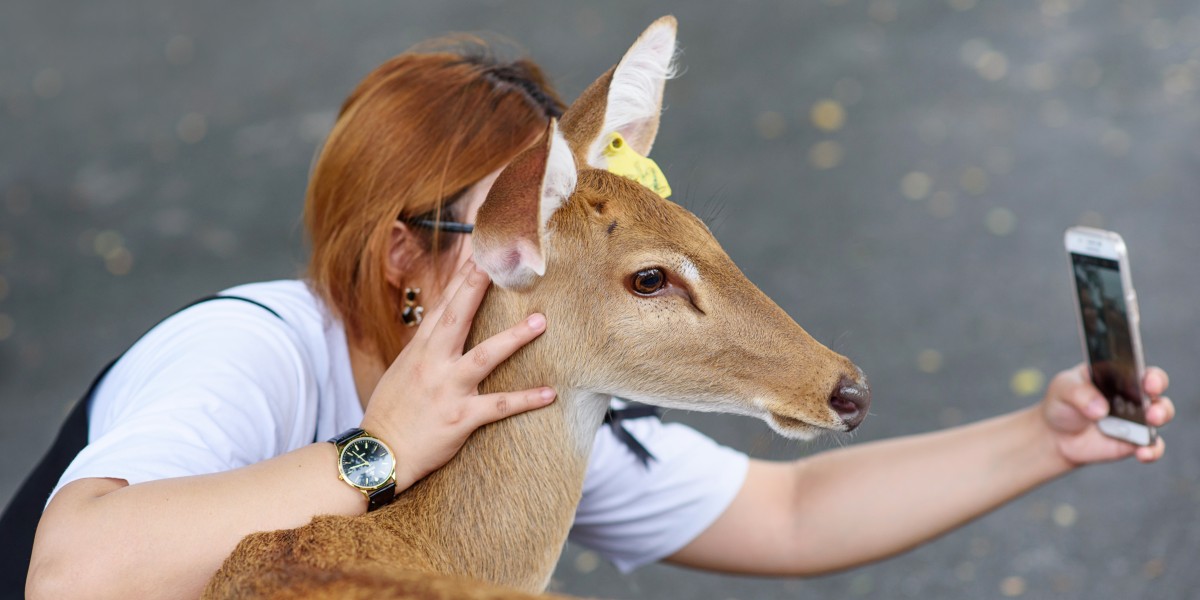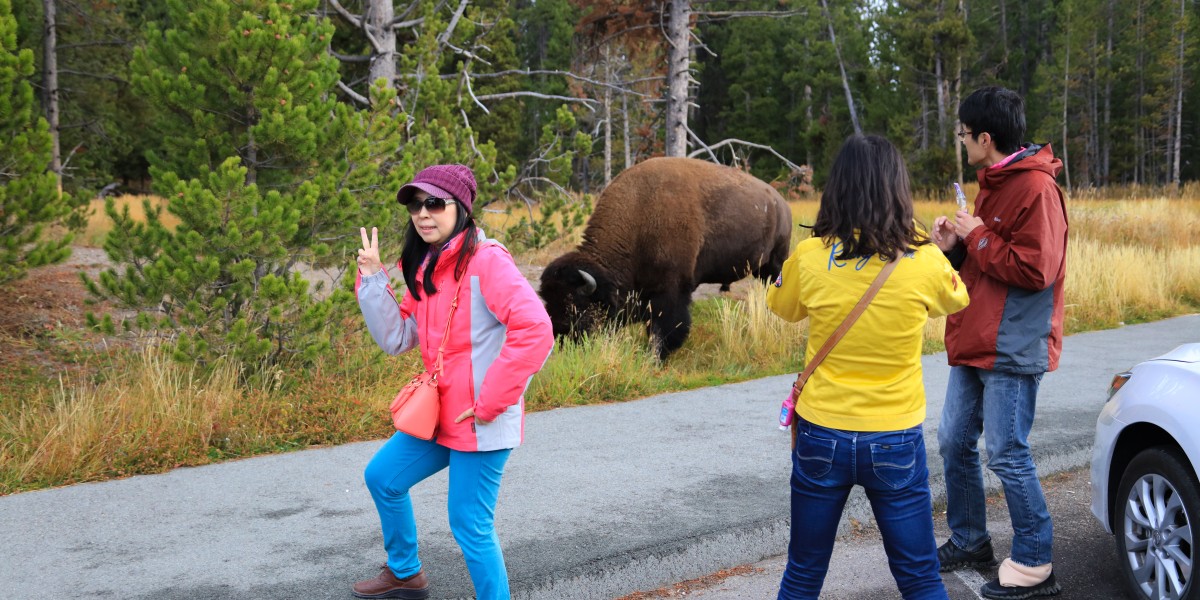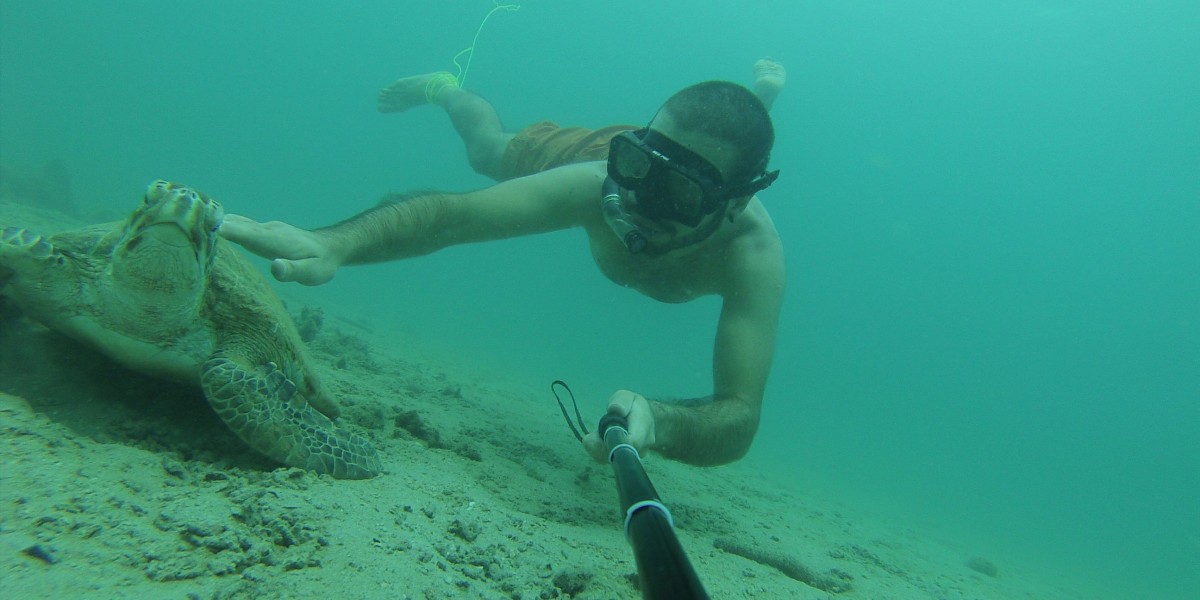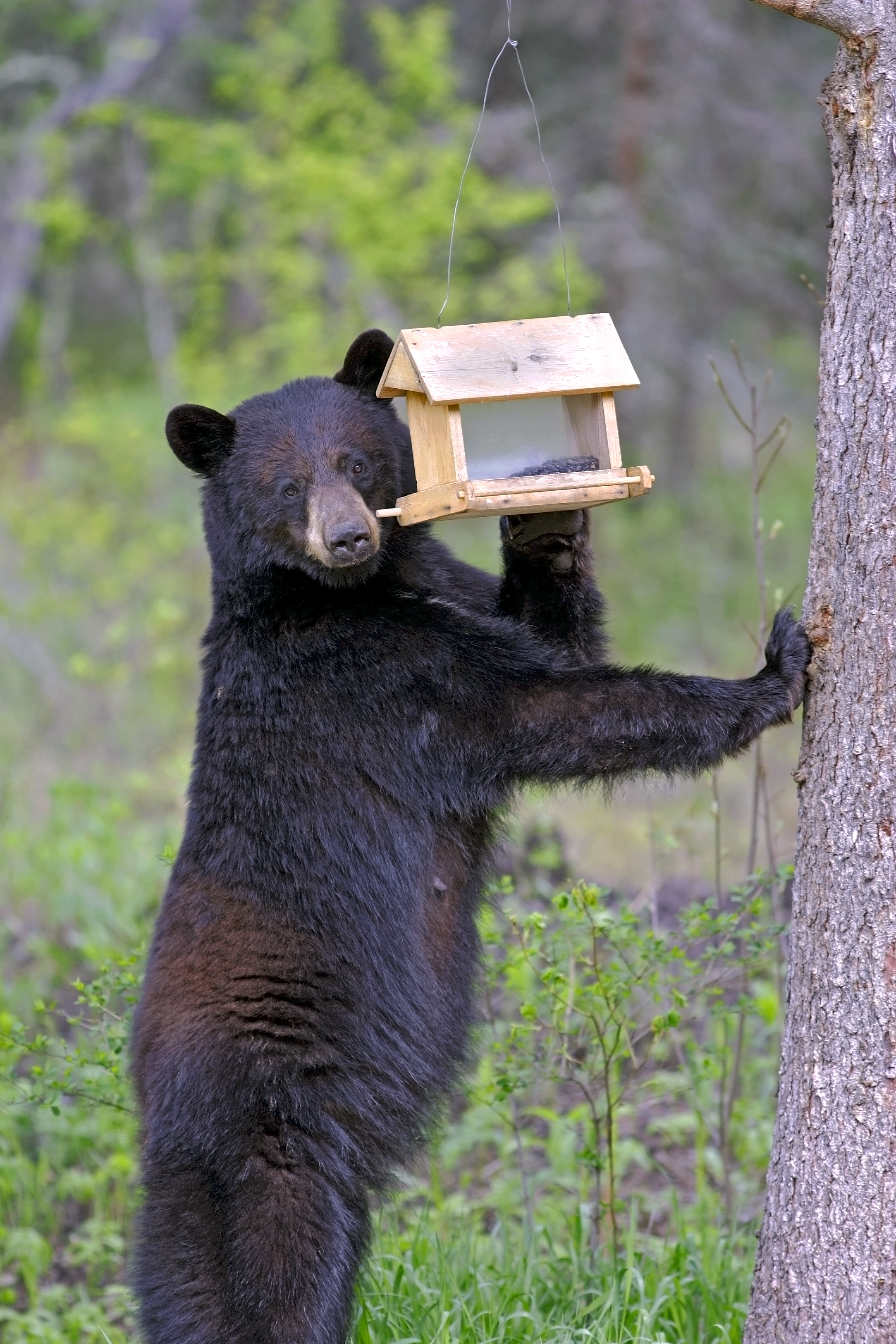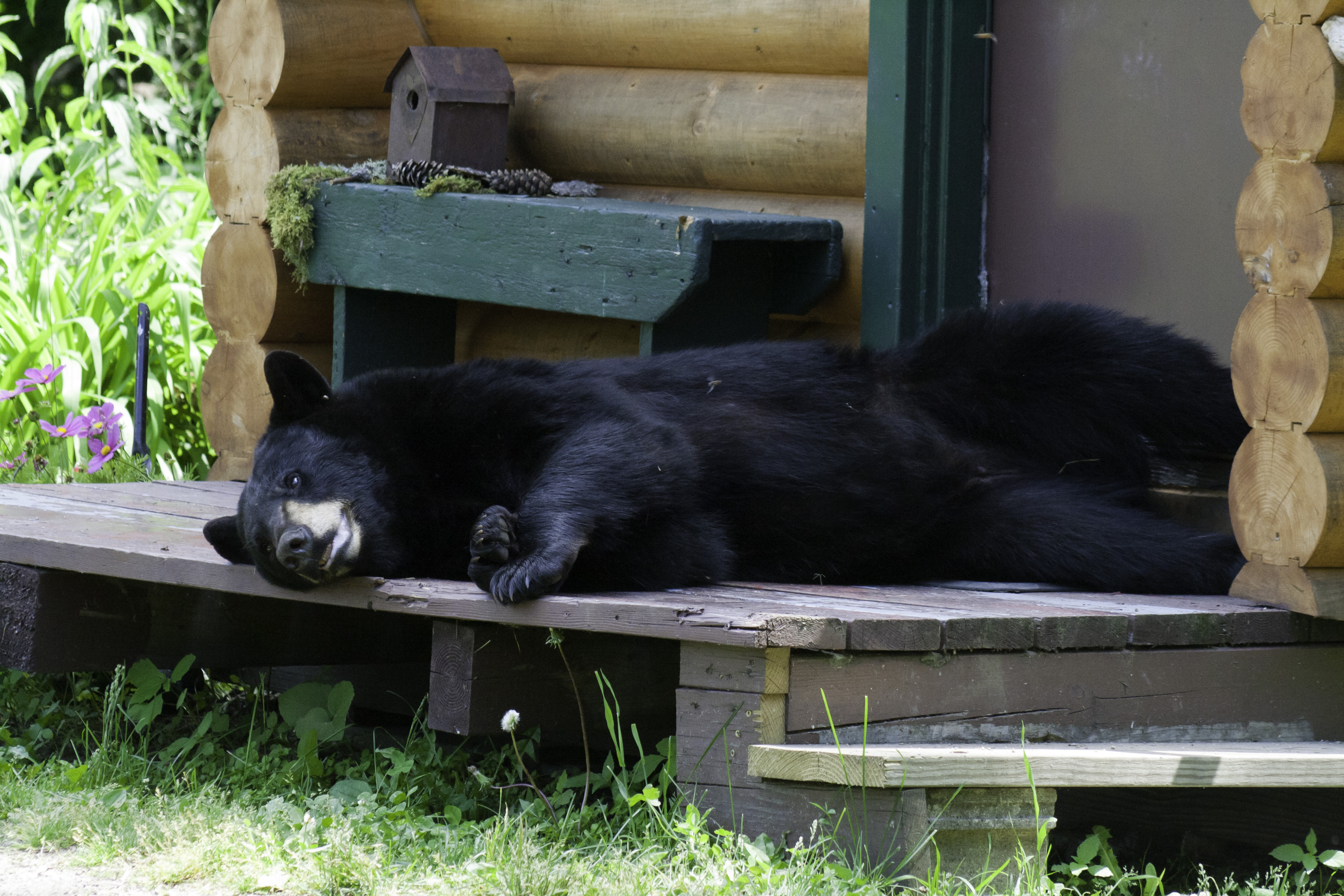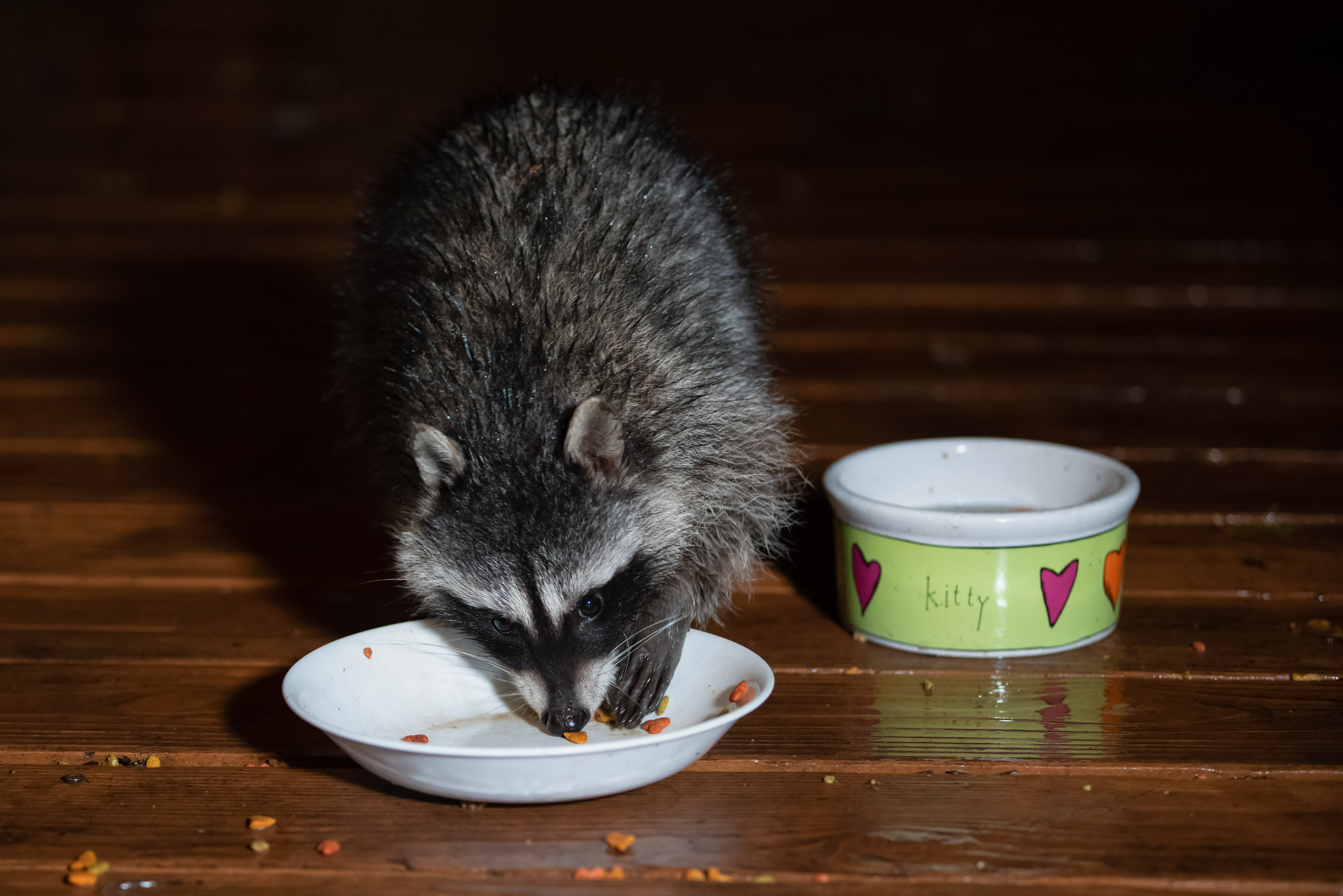We've all seen the news stories covering tragedies like the "rescued" baby bison that had to be euthanized thanks to human interference despite clear warnings, the baby dolphins mobbed at the beach by tourists desperate for selfies resulting in them dying from dehydration, or just last month the case of the "friendly" young black bear that park visitors were feeding and taking selfies with that had to be euthanized because it was so habituated to humans, it couldn't even be relocated. Wildlife professionals do not WANT to euthanize a healthy animal, but are often forced to do so due to human interference and to protect public safety. Even with the best of intentions, the purposeful or accidental habituation of wildlife often turns out badly for the animal.
Wildlife selfie craze
The wildlife selfie craze has exploded in the last five years, so much that there is a Wikipedia page dedicated to selfie related injuries and deaths, although likely it's incomplete. This increase has generated a new industry in many tourist driven countries from the Amazon to South Africa. Animals are even pulled from the wild, typically when they are young, or bred and "trained" to pose for photos with tourists eager to pay a few bucks for that once in a lifetime photo. These animals do not have the "best life" possible.
In the US, number five on Yellowstone's "What not to do list" is: do not attempt a selfie with bison, bears, wolves or elk. Many notices and flyers in the park recommend maintaining a minimum distance of 25 yards (75 ft) from bison; and still in 2015 there were 5 bison-related injuries at Yellowstone in a three month period.
So a baby raccoon walks into a bar…
When people come across young wildlife, they may be overwhelmed by the adorableness of it all; the brain ceasing all rational function. But, interacting with wildlife can be risky- for you and for them. When you encounter young wildlife that you aren't sure needs help or not, in the age of Google - look it up, or contact your local wildlife services offices and ask before acting. People who want to help can actually do more harm inadvertently than if they just watched from afar or walked away. If you choose to pick up the cute baby raccoon and pass it around, aside from the likely potential trauma to the young raccoon, the risk of disease spread to humans is real. In some circumstances, the health department may request euthanasia so that the animal can be tested for rabies, a lose lose situation for you and the animal.
Won't they starve if I don’t feed them…
Not likely. Deer are resourceful ungulates that are very adaptable to various habitats. They are adapted to the long, cold winters of New York and have a good fur coat to keep them insulated. Deer metabolism works in conjunction with the season – they fatten up in the summer and fall, when not out lookin' for love, to get them through the winter.
Deer are easily habituated to people by use of food. This puts you and the deer at risk. Typically, wild deer forage in a spread out grouping, not in a tight mass at a pile of corn or hay – when you bring increased numbers of wildlife into closer proximity to each other, the risk of disease transmission skyrockets. Habituated deer may also become demanding, damaging property, injuring people and itself in the effort to get food. And what you feed may be detrimental to their health impacting the delicate microbial balance that they rely on for digestion. Too much corn causes diarrhea, dehydration and even death.
Human habituated deer are more likely to be hit by a car, to spread disease to each other, and cause more property damage - from landscaping to structural - than normal wild deer. This increases the odds this animal will be euthanized for human health and safety. Please check the regulations on feeding deer in NYS and consider the risk of an unfavorable outcome. If you’ve just started feeding, you can slowly reduce the food until it’s clear the deer are not relying on the food source regularly. White-tailed deer are a beautiful sight to see in the wild, for tips on safely observing wildlife and the habitats best to find them in your area, please visit Watchable Wildlife: White-tailed Deer.
Blue Apron, bird feeders, and black bears, Oh my!
So you live in an area with a healthy black bear population and love to feed the birds all year round? Black bears LOVE seeds. Bird feeders full of seeds, especially fatty, black oil sunflower seeds, are prime targets for bears coming out of hibernation or fattening up in preparation for hibernation. Chances are they have enjoyed your bird feeders already whether you’ve seen them there or not.
While feeding wild birds is pretty much everyone’s favorite backyard past time, when you live in bear-prone areas, the seasonal feeding of birds is the way to go - and that means winter only. Birds don’t really need to be fed from the spring through fall, food sources are abundant for them during these seasons and bird feeders really are an easy mark for a hungry black bear
Everyone wants to eat healthier in this busy day and age, so you sign up for a popular meal delivery service, like Blue Apron. Now you have a box full of fresh meat, fish and veggies showing up your porch once a week…black bears will notice! Now that the bears are aware of your bountiful gifts, they will keep coming back. This is not to the bear’s benefit; a bear not afraid of humans is likely to be a dead bear.
Your porch will be their new summer home, so don't be surprised if you come home to this on your porch instead of your meal delivery...
Guess who's coming to dinner?
Most people feed feral cats because they feel bad and want to help out – particularly in the winter. While feral cats get a lot of heat (often rightly so) for their impact on local songbird populations, feeding them on your porch opens up a whole new can of worms - or tuna fish. Cats are obligate carnivores – that means they must eat meat whether that is an open can of cat food or birds, baby bunnies, mice, chipmunks, etc. Trouble is, the feral cats are not the only thing partaking of the bounty you are putting out. Wildlife visitors like opossums, raccoons, and skunks are a common guest to feral cat feeding spots, sometimes even larger cats – like the bobcat, and who wants to tangle with a porcupine or a bear on their porch in search of an easy meal? If you've never experienced yourself or Fido getting sprayed by a skunk, feeding feral cats will certainly increase your chances...may the odds be ever in your favor!
Whether you see them or not, they become accustomed to you ringing the cat dinner bell and this can lead to more human and domestic animal encounters with wildlife, putting all parties at risk of injury, disease and making them less afraid of humans, again. Wildlife carry a number of diseases that can impact you and your furry domestic friends; canine distemper virus, parvovirus, and leptospirosis are just a few, not to mention the plethora of internal and external parasites; mange causing mites, fleas, and ticks as well as roundworms and assorted protozoa. One of the biggest health risks is the fatal rabies virus. Any mammal, including the feral cat you are feeding, can carry and transmit rabies.
Enjoy wildlife responsibly
Wildlife species have a lot of serious risks they face every day. From habitat loss, climate change, and emerging disease concerns to the serious risk of some species' extinction in our lifetime, let's cut them a break and give them some space. Enjoying wildlife from afar is not a bad thing, keeping them wild is even better. Preserving their natural instincts by not interfering is what strengthens their adaptability to survive in an ever-changing climate and environment. Watching wildlife in their natural setting, seeing natural behavior and enjoying them as they are is what it's all about. For tips on where to see what species and when is the safest time of year, check out Watchable Wildlife for cool tips, events and educational offerings in NYS.
For some useful tips from Popular Photography; "How to selfie responsibly, and other tips for not damaging wildlife while shooting"
PS - since this article was written, another bison incident at Yellowstone involving a 9 year old girl being injured after their tour group got within 10 feet of the animal.



